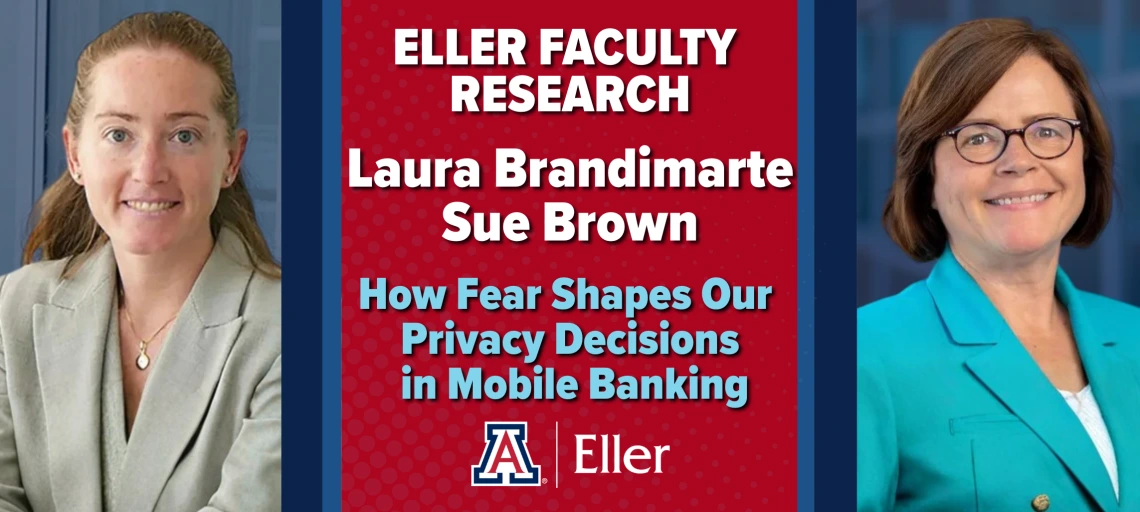How Fear Shapes Our Privacy Decisions in Mobile Banking

That sinking feeling when hearing about another data breach or bank fraud is familiar to most people. But how does that fear actually affect decisions about using mobile banking apps? That's exactly what Laura Brandimarte, associate professor of MIS, and Sue Brown, Stevie Eller Professor of MIS in the Eller College of Management, set out to discover in their new research, The Unexplored Consequences of Fear in Mobile Banking Privacy.
Despite emotions playing a significant role in how people behave online, researchers have rarely studied how feelings—especially fear—impact privacy concerns. This study fills that gap by examining how fear influences concerns about privacy when using mobile banking, how much people trust banking apps, their perception of risk and their willingness to use mobile banking in the first place.
Mobile banking has become the primary way people handle their finances, surpassing internet banking, call centers, branches and ATMs. Yet data breaches at major financial institutions like Bank of America, Flagstar Bank, and Experian have made headlines, leaving customers worried about whether their personal information is truly safe. And while we often blame technology companies for security failures, research shows that user behavior—like inattentiveness or carelessness—is often the weakest link in keeping our information secure.
Measuring fear isn't simple. When asking people after the fact how scared they felt in a moment, their answers often don't match what they experienced. To solve this problem, Brandimarte and Brown used cutting-edge technology, conducting a laboratory experiment using facial recognition technology to measure fear in real-time, combined with traditional self-reported surveys. They also ran an online experiment with broader participant groups. In both studies, participants experienced a simulated attack where financial information was stolen, allowing researchers to observe genuine fear responses.
The results reveal an interesting paradox about trust and fear. When people aren't fearful, trust in banking apps effectively reduces privacy concerns. But when fear kicks in, trust becomes much less effective at calming those worries. The research shows that when users see fear-inducing messages—like warnings about data breaches—their fear increases, which activates privacy concerns. This leads to viewing mobile banking as riskier and being less willing to use it. The facial recognition technology showed that physiological responses to fear closely matched what people reported feeling, validating both measurement approaches.
So what does this mean for banks? If financial institutions want to educate customers about safer mobile banking practices, they need to carefully consider their approach. Fear-based warning messages, while well-intentioned, may actually backfire by making customers too anxious to trust the very security features designed to protect them.
This research contributes to the understanding of how emotions affect privacy decision-making in the digital age. When people are emotional, they tend to rely less on careful analysis and more on gut feelings. Understanding this dynamic helps banks, app developers and policymakers design better communication strategies that protect users without paralyzing them with fear. By combining insights from information systems, behavioral economics, and neuroscience, Brandimarte and Brown have opened new pathways for understanding the very human emotions behind digital decisions.

